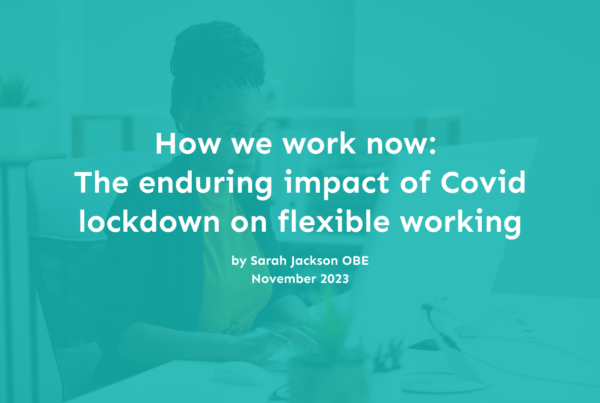
READ Last week saw Equal Pay Day – the day when women effectively stop earning due to their pay gap with men – but also International Men’s Day. Organisations need to see both sides of the gender divide in order to really address pay inequality
If you believe the theory that ‘men are from Mars and women are from Venus’, you may be miffed that we had two major gender campaigns jostling for attention last week.
Equal Pay Day on November 18 highlighted our continuing UK gender pay gap, while International Men’s Day the very next day promoted positive conversations about the concept of masculinity and the role of men and fathers.
Yet these two seemingly separate campaigns, like their cheek-by-jowl dates, actually share many solutions.
Equal Pay Day, run by the Fawcett Society, marks the day in the year when UK women effectively, on average, stop earning relative to men because of the gender pay gap. A major contributor to the gap is the motherhood penalty – women’s earnings drop by almost half after the birth of their first child. The price of being the primary carer is high.
On the other side of the gender coin, younger fathers talk increasingly about their frustration at being stereotyped as the breadwinner. And about their unhappiness at not being able to be the engaged father they wish to be. International Men’s Day highlighted the challenges faced by men as parents, particularly new fathers and separated fathers, and set out to promote positive conversations about manhood and masculinity.
Many of us hoped that Covid lockdowns would shift attitudes about which parents pushed on with their careers, and which took their foot off the gas, or stopped completely. We know men took on more caring responsibilities during the pandemic, and fathers talked about the lockdown silver lining of spending more time with their families. But rather than hold out for more flexible working, men are returning to offices more quickly than women, suggesting we’re reverting to the stereotypes of male breadwinner and female flexible worker and second earner.
A study in the US of a professional services firm suggests that deep-rooted societal, family and personal values come into play. Women are validated if they choose the ‘mummy’ track, and sympathised with for the work challenges they face as a result. Men are validated for choosing the ‘breadwinner’ track, and sympathised with for the sacrifices they make for their family. The employer wrings their hands about the choices that men and women will just keep making. And the pay gap continues. And women’s skills are lost from business. And fathers continue to suffer, as do their children, from their absence.
We can change this picture for men and for women. To do so requires action, from employers and from government.
The key for employers is to build awareness and trust. Put simply, to make it safe, make it easy and make it normal, to be a working father.
Making it safe is about setting the tone from the top, with authentic leadership and engaged role modelling.
Making it easy is about great comms, so that father-related policies are regularly promoted, easy to access and understand. And for leave to be paid, wherever possible.
Making it normal requires training managers to be father-aware, formally building a discussion about working patterns into supervision and reviews and at transition points. Father networks and “real” models – working fathers at every level of the organisation and stage of fatherhood – contribute to normalisation.
Safe, easy and normal is what in my experience sets apart those organisations where we find higher than average take up of family policies by men. Citi showed the way when Shared Parental Leave was first introduced. Their offer was similar to many others in terms of flexibility and pay, but take-up, including from senior men, was higher. They had advertised it extensively, and employed a dedicated staff member to answer questions. Fathers felt like they really wanted men to take up the new right
More challenging, and arguably more critical, is honesty about workloads and working hours. Until jobs are human sized, a choice is forced on anyone who has primary care responsibilities in a family. And this remains, usually, the mother.
This is why the Government needs to take action too, by unpicking two massive structural barriers, that continue to force gendered choices on parents.
First, by properly funding childcare. The average family spends more on childcare than on their housing. Which forces the choice that one person should reduce their hours or leave work entirely. This is most often the mother – for those deeply conditioned reasons.
And by making flexible working truly a default. Not a day one right to ask, but a requirement that all jobs are advertised with the available flexibility (if there is any) already designed in, for the taking, by man or woman.
The benefits of engaged fatherhood are as powerful for families as the benefits of engaged working mothers are for business. But we have to think about this holistically, not as separate battles of the sexes.
First published on 23rd November 2021 in Personnel Today https://www.personneltoday.com/hr/gender-pay-gap-focusing-on-fathers-can-reap-rewards/



